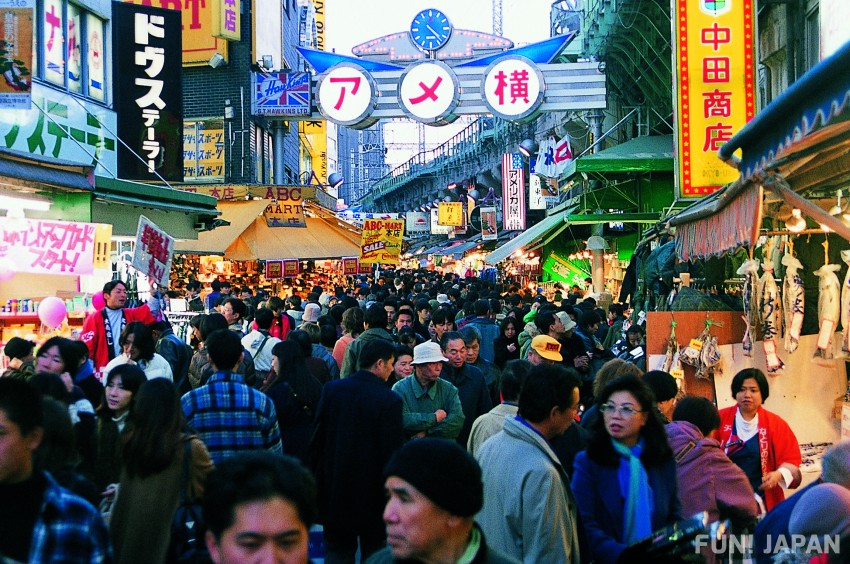
Once Christmas ends in Japan, the entire country suddenly changes into the new year mood, with families and businesses doing their new year cleaning and preparing to enter the new year. How much do you know about Japan's new year? Have you heard of Toshikoshi soba, Zōni, Osechi, Hatsumode, or Otoshidama?
Let's take a look at some of Japan's new year customs and meals during this period.

What are Omisoka and Shogatsu-sanganichi?

The last day of December is known as "Omisoka" in Japan and is said to be the day where you prepare to meet the god of the incoming year. January 1st to 3rd is known as Shogatsu-sanganichi and is often spent with family and friends celebrating the new year.
Furthermore, from 12/29 to 1/3 most sightseeing spots, restaurants, shops, and other businesses will close. If you're visiting Japan during this period it's best to check the official websites of the locations you're wanting to check out and if they will be open!
How to Prepare for the New Year?
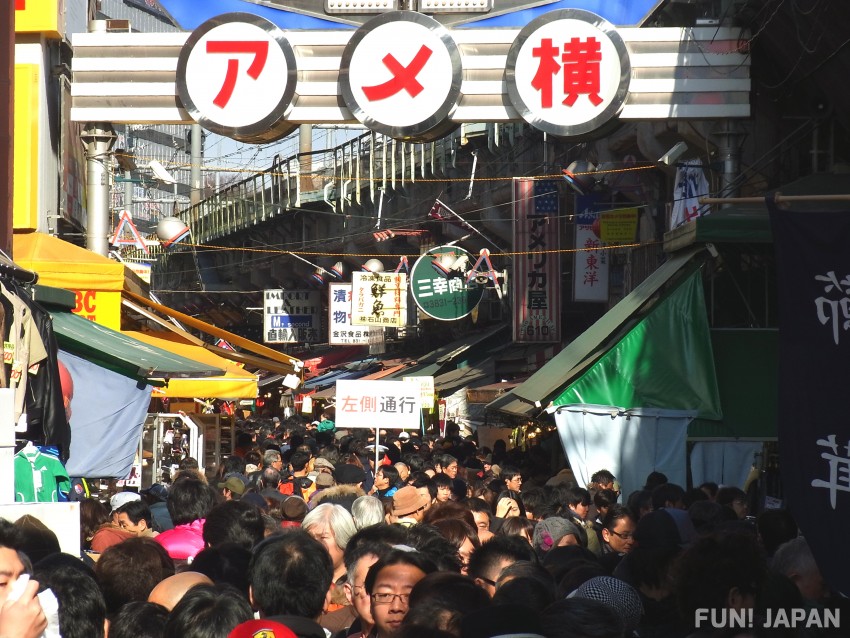
Once the end of December rolls around, Japanese households and businesses will begin a major cleanup to ensure all dust and dirt from the previous year is cleaned.
Many families and businesses will also display New Year's decorations in their entrance, this is to ensure the god of the incoming year will visit, displaying things such as Shimenawa and Kadomatsu. Many families also place kagami mochi within their house or apartment, it's a small rounded piece of mochi that is built up with an orange displayed on top to used to invite

Many Japanese people will eat "Toshikoshi Soba" on December 31st for the New Year.
While there are many theories for why people eat Toshikoshi Soba on Omisoka, it's often said that because the soba noodles are long they represent living a long life, with soba being easier to cut than most other noodles, it's often regarded as "allowing one to cut all ties from evil from the previous year" that helps avoid disasters and other such things. People will usually top the soba noodles with shrimp fried in tempura, this is often said to be because the shape of the shrimp resembles the posture of the elderly, also representing long life. Furthermore, since shrimps turn red when cooked, this is often seen as a good omen. Shrimps are used a lot in New Year dishes including osechi.
When talking about events during Omisoka, the most important one has to be the temple bell being rung 108 times on New Year's Eve. Many Japanese people will head towards the temple to listen to this bell after eating their toshikoshi soba noodles.
This bell ringing is a custom of Buddhism, with the priest ringing the bell 108 times it is said to represent the 108 worldy desires, and through ringing the bell it will get rid of these desires for the new year.
Hatsuyume, Hatsuhinode, Hatsumode...
Japanese People Love "Firsts"

In Japan there are many things that are treasured when done for the first time after the new year, these things are often called "Hatsu●●" in Japanese.
For example, the first sunrise after the new year has arrived is known as "Hatsuhinode". People even climb tall mountains such as Mt. Fuji to be able to see the rising sun on the first day of the new year.
After seeing the sun rise in the morning, the first visit to a shrine or temple is known as "Hatsumode".
Other firsts during this period are things such as seeing your first dream of the new year (Hatsuyume), laughing for the first time (Hatsuwarai), and more.
New Year's Food
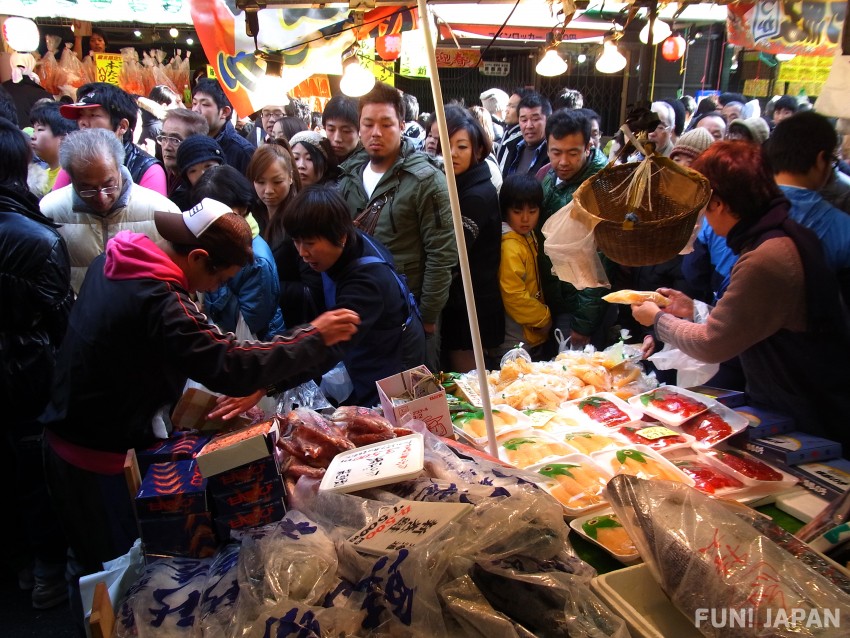
From Jan 1 to Jan 3, Japanese people will eat traditional dishes such as osechi and zouni, some families will also play traditional games such as fukuwarai and karuta.
Depending on the region, some places will have different and unique toppings for their toshikoshi soba such as shrimp and carrots.
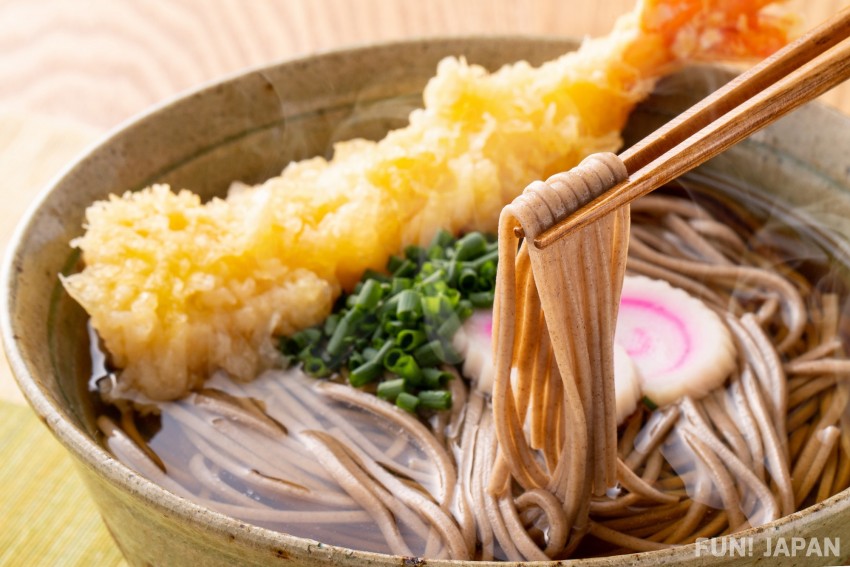
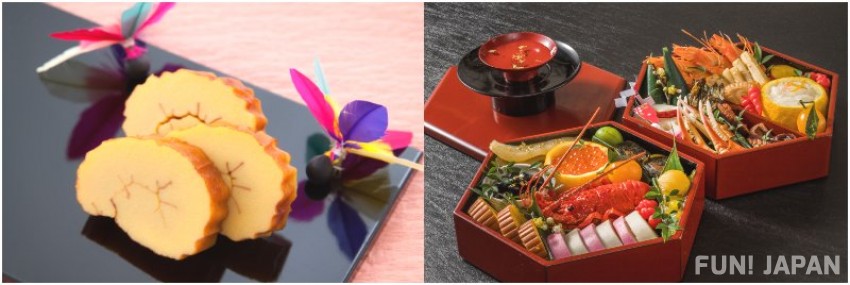
The meal you eat to celebrate the new year is osechi.
It contains black soybeans, herring roe, grilled shrimp, red and white namasu, rolled omelette mixed with fish, and more all of which are said to contain wishes and good omens for the new year. They're typically contained within a box similar to a bento.
Another common dish during the New Year's period is zouni, which contains daikon, carrots, and fish that differ depending on the region. The dish itself is boiled in miso and soy sauce broth.
While the ingredients used in this dish may differ depending on the region, almost everyone typically uses mochi as one of the ingredients, however, the type of mochi can be different such as square mochi, round mochi, anko (red bean) mochi, and more.
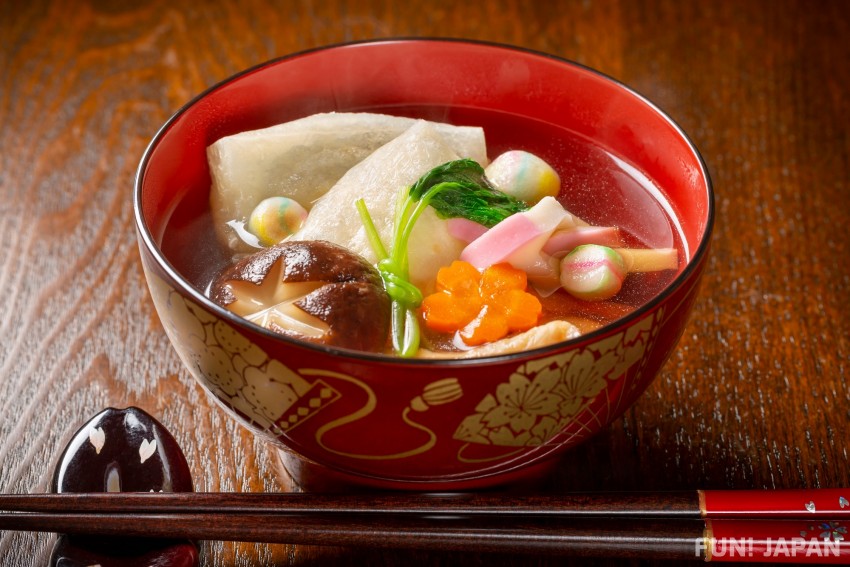
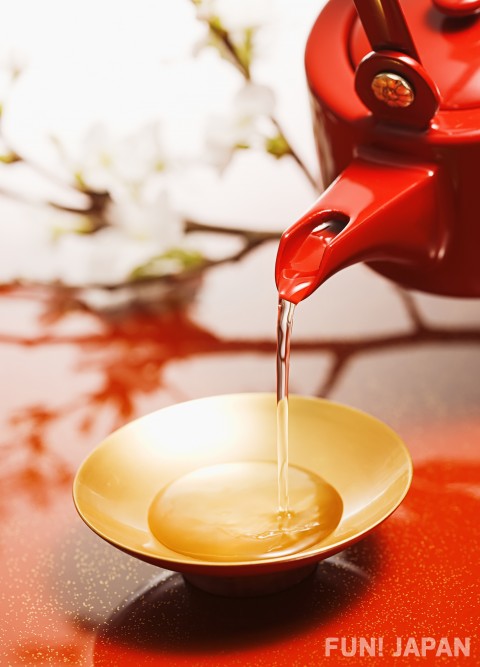
There are also drinks that are typical to the New Year's period.
People often drink what is known as "Otoso" which is said to remove any impurities from the previous year and is a type of Japanese sake.
"Amazake" is a type of sweet rice wine that you'll see at temples. There are many delicious foods and drinks that are consumed over the New Year's period, and it can cause some people to gain weight over this period.
Enjoy a New Year's Meal from the Supermarket or Convenience Store!
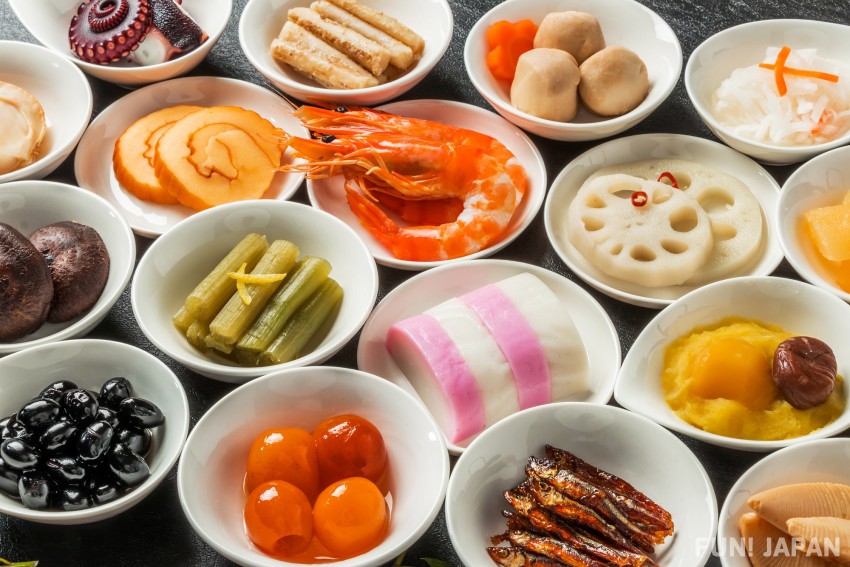
If you're visiting Japan over the New Year's period, make sure to visit a supermarket or convenience store where you can pick up some of these foods.
Osechi found within bento boxes is reservation only, so it may be difficult to purchase on the day, however, you can buy the ingredients separately at most supermarkets. Pick up some that you want to try and enjoy them in your hotel room.
Finally, there is "otoshidama" where adults will give money to their children.
Around this time you'll find envelopes and other such stationery which cute and popular anime characters depicted which are often bought and used to give otoshidama, they're also perfect as souvenirs!
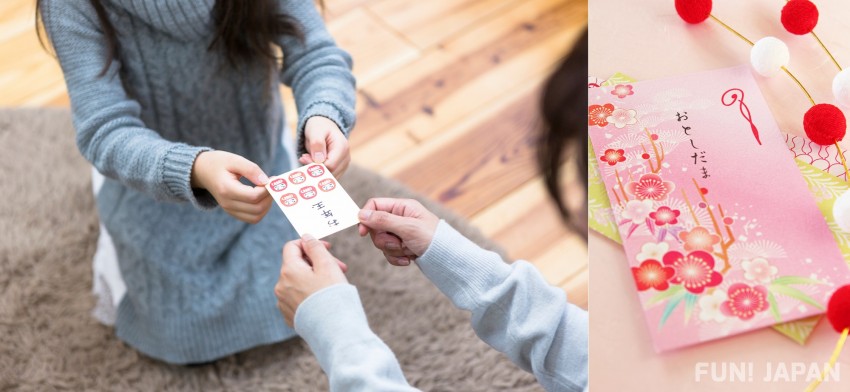
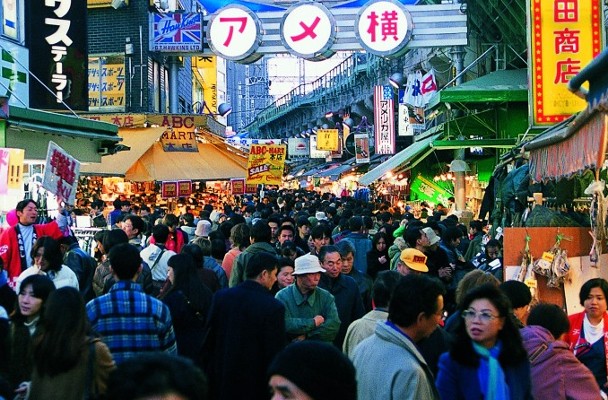
Comments